Oman, with its rich history and diverse cultural influences, boasts a unique and beautiful traditional attire that represents the heritage and values of its people. From the graceful robes of men to the elegant dresses worn by women, Omani clothing is both functional and symbolic, often showcasing the country’s regional variations, craftsmanship, and respect for tradition. In this guide, let’s together with Oman Luxury Tours explore the traditional dress of Oman and provide an in-depth look at both men’s and women’s traditional clothing, highlighting the accessories that complement these outfits and the historical significance behind them.
Introduction of Oman Traditional Clothes
The traditional dress of Oman is much more than a mere style statement—it is a reflection of a long-standing heritage that has been passed down through generations. Rooted in a blend of Bedouin and maritime influences, Oman traditional dress have evolved to suit the demands of both the harsh desert environment and the refined tastes of its people.
Historically, the Oman national dress was designed to provide comfort, protection, and practicality. Lightweight fabrics, loose cuts, and breathable materials have all played a role in ensuring that the garments remain both stylish and functional under the region’s intense sun and fluctuating temperatures. Over the centuries, these practical designs have been embellished with intricate embroidery, vibrant colors, and distinctive patterns that set Oman apart from its neighbors.
The art of dressing in Oman is deeply symbolic. Every element—from the long flowing robes to the carefully chosen accessories—carries meanings related to social status, regional identity, and even personal honor. For instance, the elaborate daggers, known as khanjars, are not just decorative; they are imbued with historical significance and are often worn as a symbol of manhood and leadership. Similarly, the variations in style and fabric among the Oman traditional clothes also indicate differences in tribal affiliations and local customs.
Today, the national costume of Oman remains a vibrant part of daily life and special occasions. Whether at festivals, weddings, or cultural events, both men and women proudly display their traditional attire as a mark of national pride. For tourists, encountering Oman traditional clothes offers a window into a culture that cherishes its past while embracing the future—a true testament to the enduring allure of the Oman national dress.
Oman Men’s Traditional Dress
Thobe
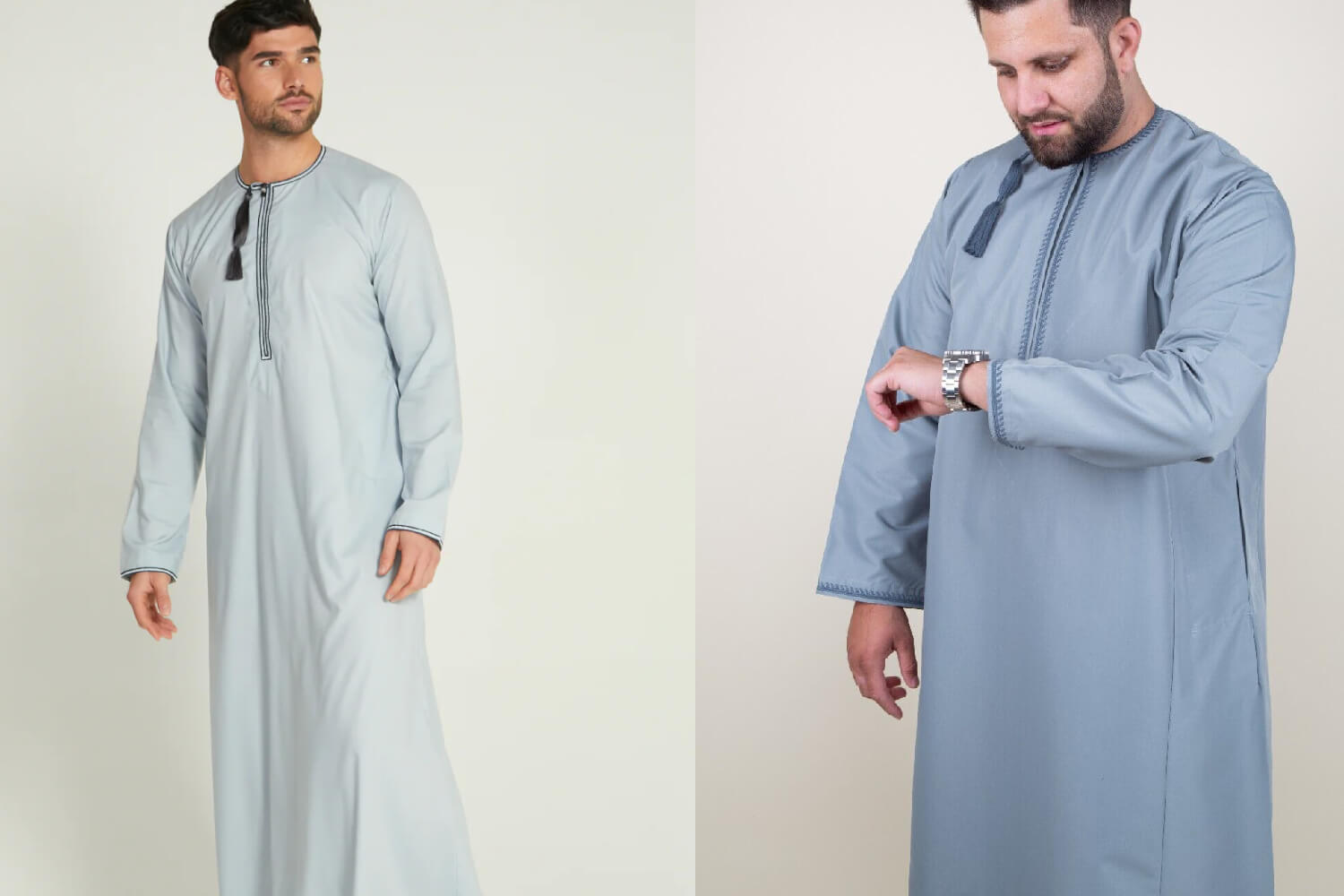
The thobe is one of the most recognizable elements of oman traditional clothes. This long, loose-fitting garment is designed with both comfort and style in mind. Traditionally made from cotton or lightweight fabrics, the thobe is perfectly suited to the region’s warm climate, allowing air to circulate and keeping the wearer cool even on the hottest days.
The design of the thobe is understated yet sophisticated. Its simple silhouette is often accented by subtle embroidery or decorative stitching along the collar, cuffs, and hem. The choice of color, typically white or off-white, not only reflects the traditional aesthetic but also serves the practical purpose of reflecting the sun’s rays.
For many Omani men, the thobe is a symbol of identity and pride. It is worn during both everyday activities and special occasions, making it a versatile garment that embodies the continuity of tradition in a modern world. The traditional dress of Oman, including the thobe, is celebrated for its timeless appeal and its ability to bridge the gap between the past and the present.
Dishdasha
Closely related to the thobe is the dishdasha—a term often used interchangeably with the national dress of Oman. While the words “thobe” and “dishdasha” may sometimes be used synonymously, subtle regional variations exist that distinguish the two. The dishdasha is particularly noted for its simplicity and practicality, mirroring the functional needs of desert life.
The dishdasha is crafted from high-quality fabrics that ensure durability and comfort. Its loose fit is designed to provide ease of movement, making it ideal for both work and leisure. Over the years, designers have introduced modern twists to the traditional dishdasha, incorporating innovative patterns and refined cuts while maintaining its cultural essence. This evolution in design is a perfect example of how the national costume of Oman remains relevant in contemporary fashion without losing its heritage.
The enduring popularity of the dishdasha highlights the importance of tradition in Omani culture. Whether worn in its classic form or updated for modern tastes, the dishdasha remains a definitive element of Oman traditional clothes—a garment that connects the wearer to a rich history of craftsmanship and cultural pride.
Kuma
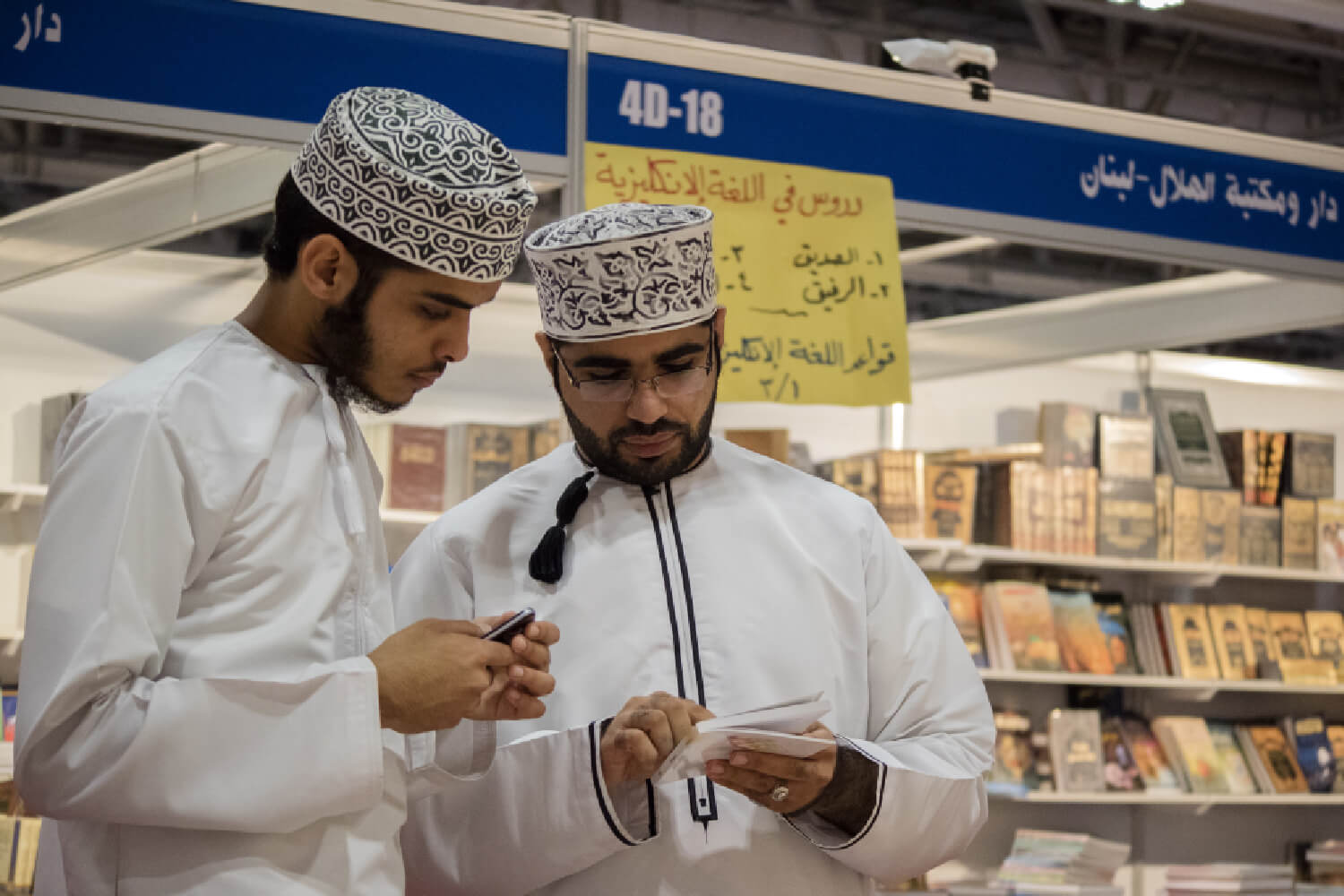
Omani men wear several different types of headwear, each with distinct cultural significance. The most common types include the Kuma, a small cap worn underneath a turban or headscarf. It protects the head from heat in the summers and keeps it warm in the winters. The kummah cap under the mussar is often made from Kashmiri wool. It includes intricate embroidery known as tanjeem that makes each cap unique. Traditionally, the women of the household stitch personalized kummahs for their family members. For formal events or religious ceremonies, the Omani head turban may be worn, which adds an elegant and ceremonial touch to the national dress.
Daggers – Khanjars

Perhaps one of the most iconic symbols of Oman’s traditional attire is the khanjar, a beautifully curved dagger that is an indispensable accessory for Omani men. The khanjar is much more than a decorative piece; it is a symbol of honor, valor, and national pride.
Historically, the khanjar was used both as a tool and as a weapon. Today, however, it stands as a cultural emblem and is often worn during ceremonies, weddings, and other significant events. The craftsmanship of the khanjar is exquisite—each dagger is carefully fashioned with intricate detailing on its hilt and blade. The design of the khanjar often incorporates motifs and symbols that reflect the rich history and artistry of Oman.
The presence of the khanjar in the traditional dress of Oman is a reminder of the country’s storied past and the enduring spirit of its people. This iconic accessory continues to be a source of pride and is celebrated as an integral part of oman traditional clothes. For tourists and collectors alike, the khanjar offers a tangible connection to Oman’s heritage and its martial traditions.
Oman Women’s Traditional dress
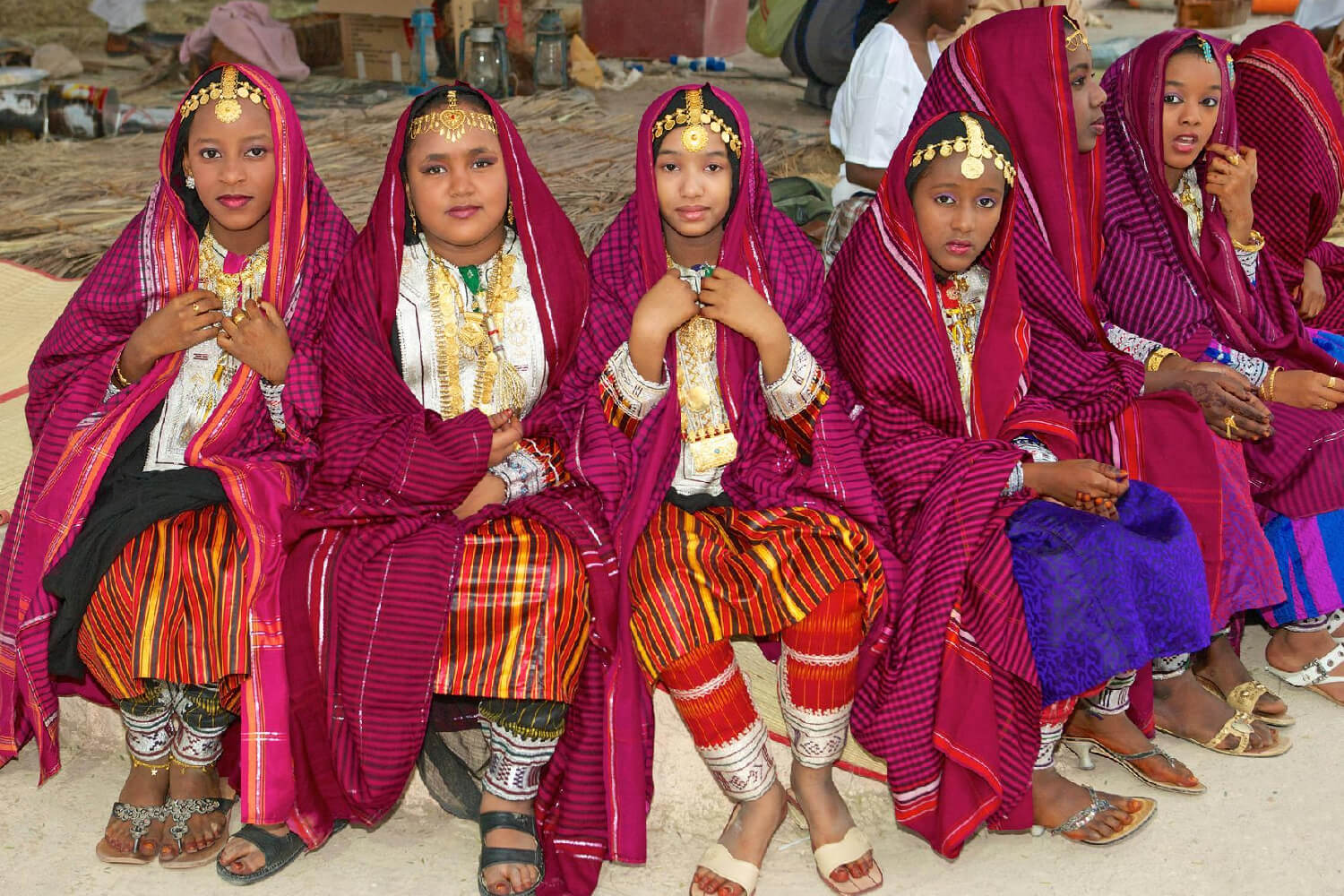
Thawb or Dishdasha
Much like their male counterparts, Omani women also wear a version of the thobe or dishdasha—but with distinctive modifications that emphasize femininity and elegance. The women’s thawb is typically a long, flowing dress that is tailored to provide both modesty and beauty. Crafted from fine fabrics such as silk, chiffon, or lightweight cotton, the garment is designed to drape gracefully and move with fluidity.
The color palette for the women’s thawb is often more varied than that of men’s attire. While white remains popular for its symbolism of purity and simplicity, richer hues such as deep blues, burgundies, and greens are also common. These colors not only enhance the garment’s visual appeal but also highlight the individual style and regional variations within Oman traditional clothes.
Embellishments on the women’s thawb are often intricate. Delicate embroidery along the neckline, cuffs, and hemline adds a layer of sophistication and artistry. The result is a garment that is not only a part of the Oman national dress but also a piece of wearable art that reflects centuries of cultural evolution and creative ingenuity.
Sirwal
Complementing the long flowing thawb is the sirwal, a type of loose-fitting trousers that are an essential part of the traditional costume for Omani women. The sirwal is designed for comfort and mobility while maintaining the modest aesthetic that is central to Omani culture.
Crafted from soft, breathable fabrics, the sirwal is typically worn under or paired with the thawb, adding a layered dimension to the outfit. Its relaxed fit allows for ease of movement, making it ideal for both everyday wear and ceremonial occasions. In many regions of Oman, the sirwal is adorned with subtle decorative stitching or embroidery, which ties it aesthetically to the rest of the ensemble.
The integration of the sirwal into oman traditional clothes highlights the balanced approach to fashion in Oman—a blend of practicality and beauty. For modern Omani women, the sirwal remains a cherished garment that upholds the traditions of the past while comfortably meeting the needs of contemporary life.
Headscarf (Lihaf, Al-ghadfa, Waqaya, or Kanga)
An integral component of the Oman national dress for women is the headscarf, which is known by various names including Lihaf, Al-ghadfa, Waqaya, or Kanga depending on regional styles and traditions.
Worn in various styles, the headscarf can be draped in a way that frames the face beautifully or arranged to complement the overall silhouette of the outfit. In some regions, the headscarf is decorated with embroidered borders or subtle patterns that reflect local artistic traditions. The versatility of the headscarf makes it an essential accessory for every Omani woman, whether she is attending a festive celebration or going about her daily life.
Abaya
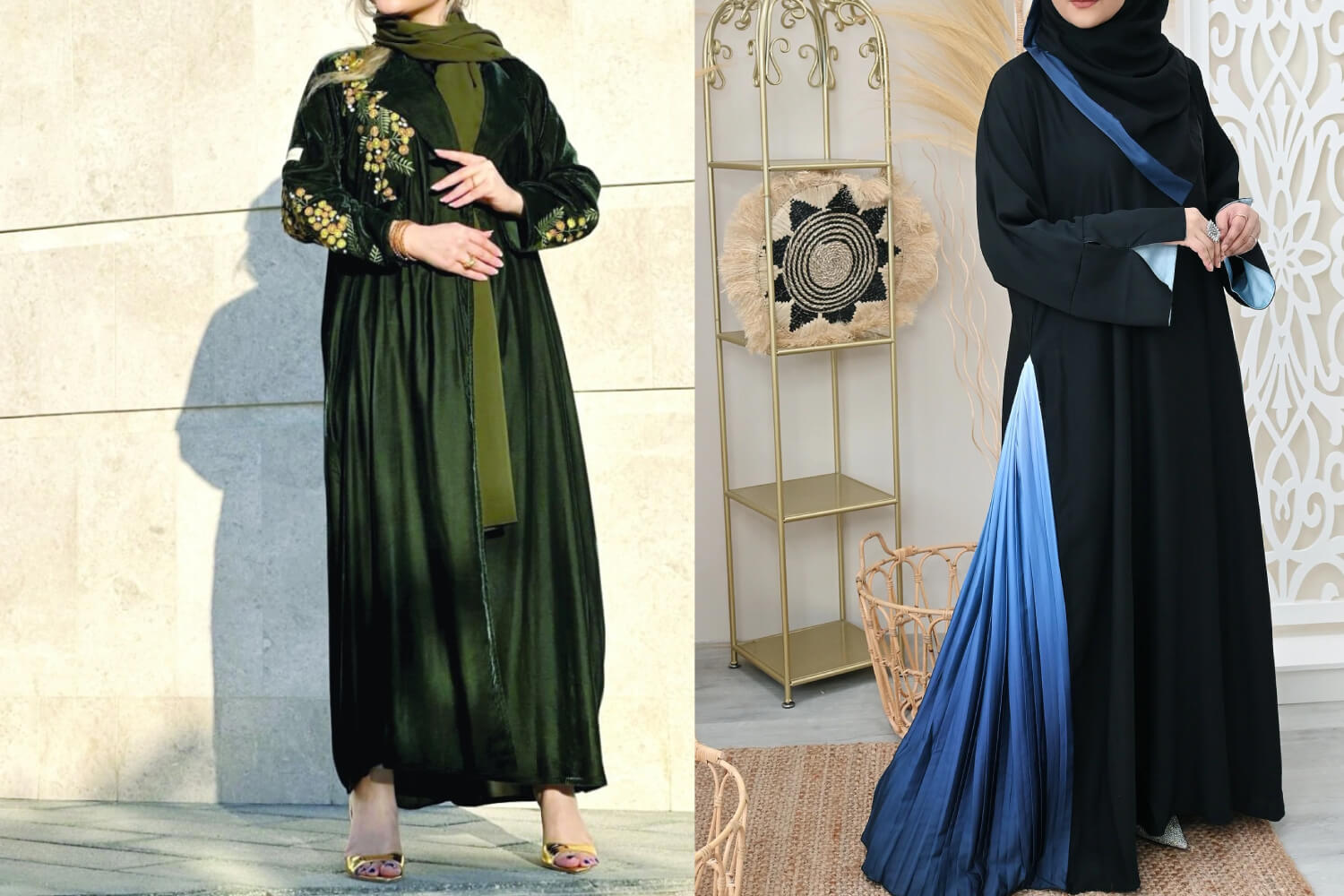
The abaya is another hallmark of Oman women’s traditional dress. This flowing, full-length cloak is typically worn over the thawb and sirwal, adding an extra layer of elegance and modesty to the ensemble. The abaya is designed to be both protective and ornamental, with its loose fit ensuring comfort while its fabric and embellishments enhance its aesthetic appeal.
Traditionally, abayas in Oman are crafted from luxurious materials and may feature intricate embroidery, lacework, or bead detailing. While the basic design remains simple, modern interpretations have introduced a variety of cuts and styles that cater to contemporary tastes without compromising on cultural significance. Whether plain or decorated, the abaya continues to play a central role in the Oman national dress, symbolizing grace, dignity, and a deep respect for tradition.
For many Omani women, the abaya is a cherished garment that serves as a canvas for self-expression—a beautiful melding of the old and the new. Its continued evolution is a testament to the resilience of Oman traditional clothes and the enduring appeal of the national costume of Oman.
Jewelry and Accessories Wearing With Oman Traditional Dress
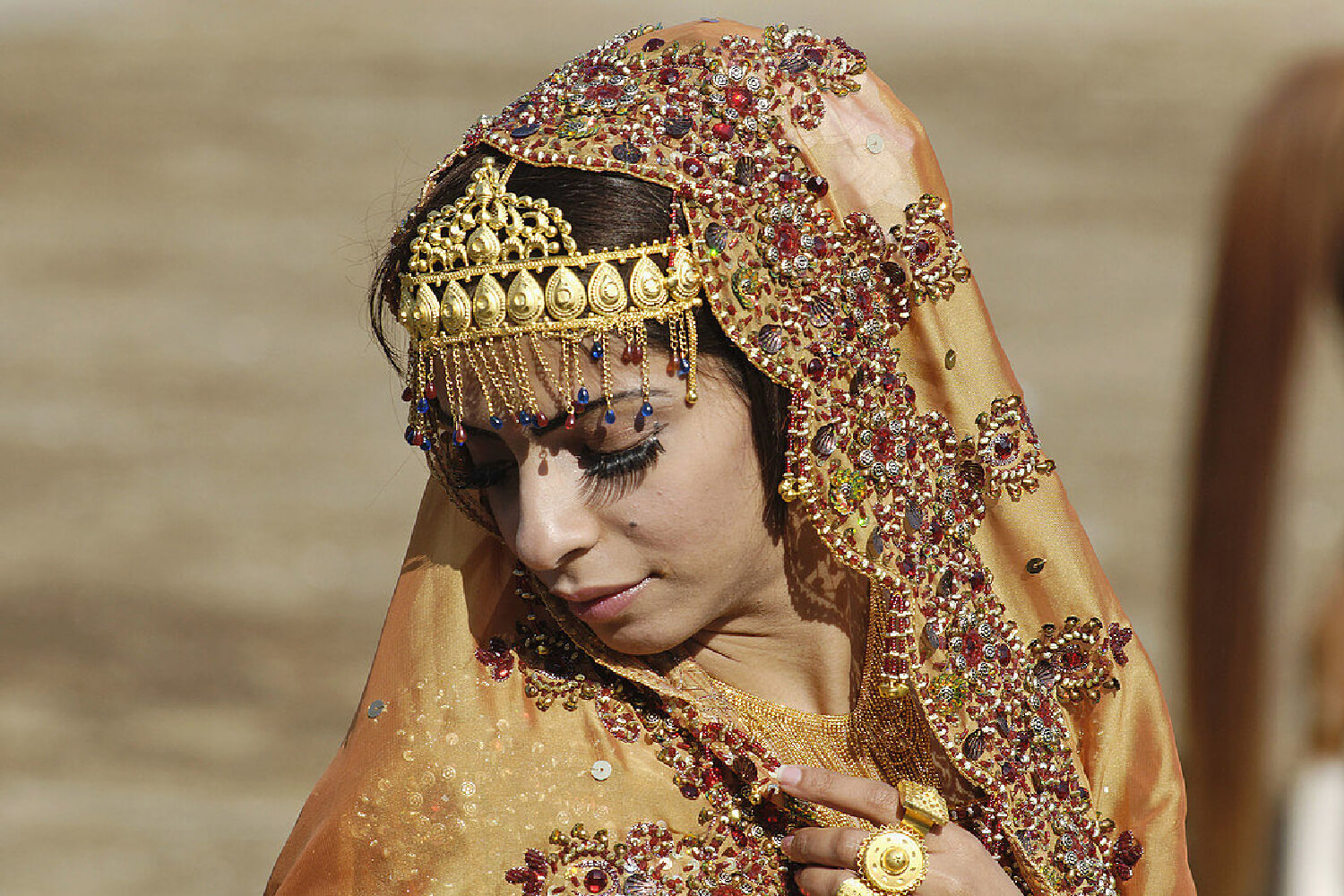
Omani women take immense pride in the jewelry and accessories that complete their traditional attire. Meticulously crafted silver pieces—ranging from bracelets and necklaces to earrings—enhance the elegance and allure of their outfits. These adornments, often featuring distinct Omani motifs, are treasured family heirlooms passed down through the generations. Moreover, traditional clothing in Oman, embraced by both men and women, not only reflects a strong cultural identity but also celebrates a rich legacy of history, craftsmanship, and values. Even as modern life evolves, these garments remain a vivid testament to Oman’s enduring cultural heritage.
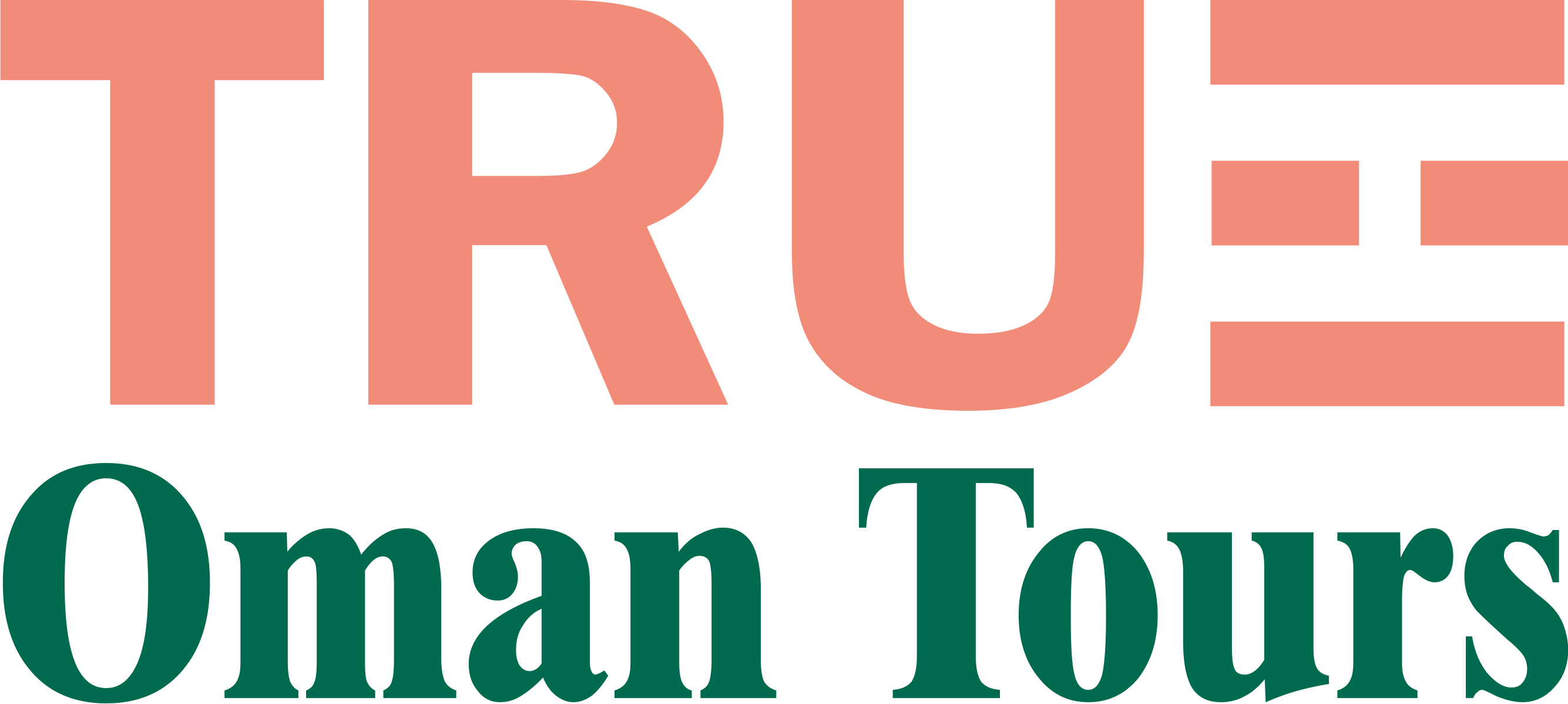
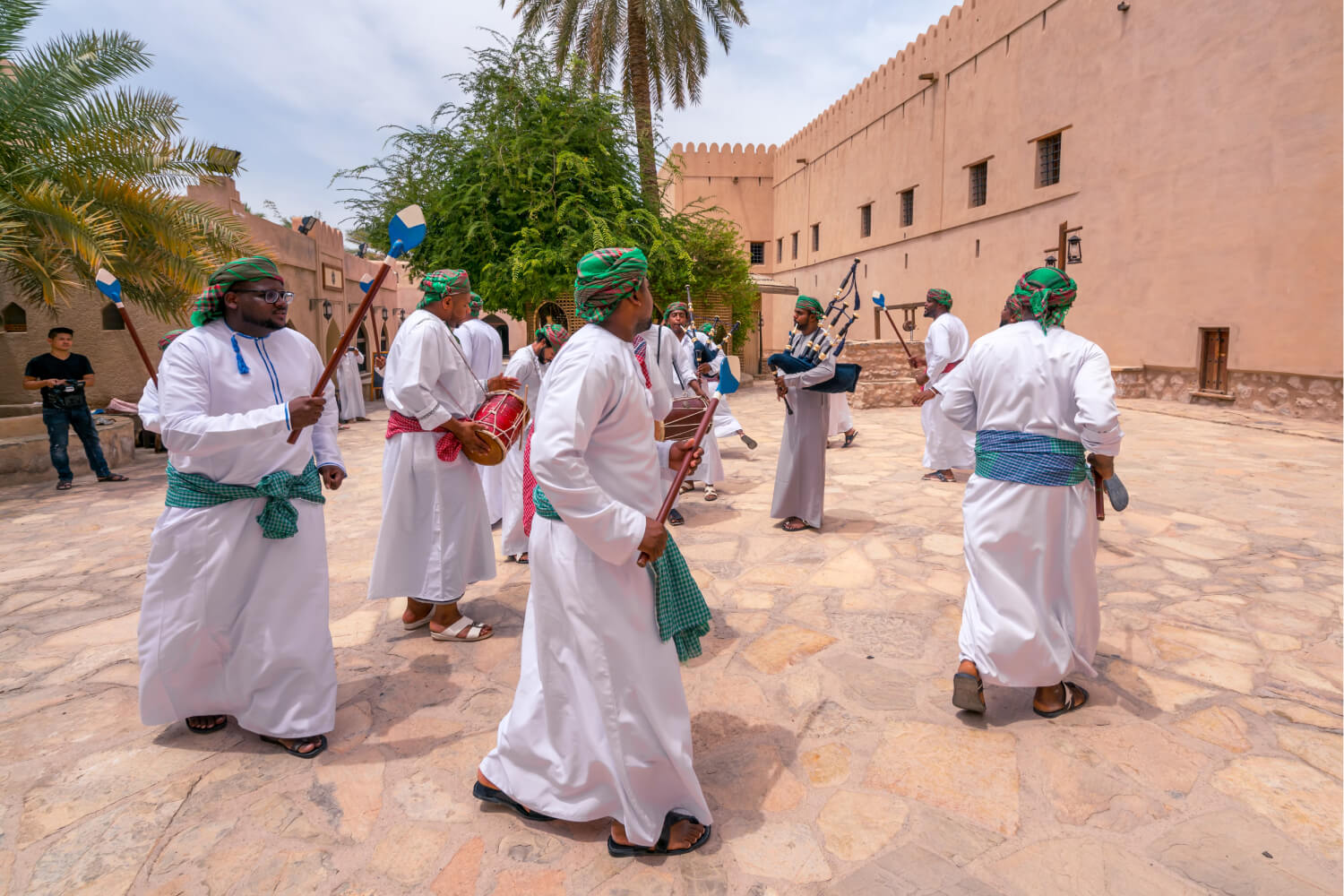
0 Comment